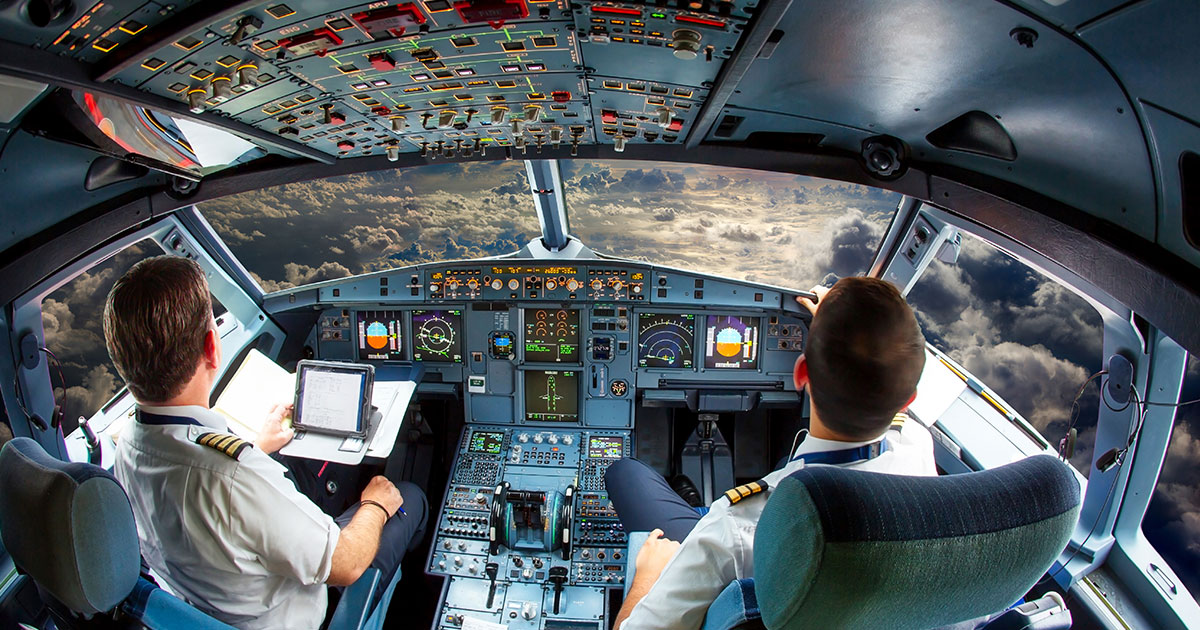
Ever wondered what it takes to become a pilot? Pilot training programs are rigorous, demanding, and incredibly rewarding. From mastering the basics of flight to understanding complex aviation systems, these programs cover a wide range of skills and knowledge. But what exactly goes into training the next generation of aviators? Whether you're dreaming of soaring through the skies or just curious about the process, this blog post will give you a glimpse into the world of pilot training. We'll explore 15 fascinating facts that highlight the challenges, milestones, and triumphs of aspiring pilots. Buckle up and get ready to learn what it truly takes to earn those wings!
Key Takeaways:
- Pilot training programs teach aspiring aviators the skills needed to operate aircraft safely, covering topics from basic flight principles to advanced navigation techniques.
- Different licenses cater to various types of flying, with specialized training programs available for different types of aircraft and flying conditions.
What is Pilot Training?
Pilot training programs are designed to teach aspiring aviators the skills needed to operate aircraft safely. These programs cover a range of topics from basic flight principles to advanced navigation techniques. Here are some fascinating facts about pilot training programs.
-
Flight Hours Requirement: To become a commercial pilot, one must log at least 250 flight hours. This includes solo flights, cross-country flights, and night flying.
-
Ground School: Before taking to the skies, students must complete ground school. This involves learning about aerodynamics, weather patterns, and aviation regulations.
-
Simulators: Modern pilot training heavily relies on flight simulators. These devices replicate real-life flying conditions, helping students practice without leaving the ground.
Types of Pilot Licenses
Different licenses cater to various types of flying. Each license requires specific training and qualifications.
-
Private Pilot License (PPL): The PPL is the first step for many aspiring pilots. It allows one to fly small aircraft for personal use.
-
Commercial Pilot License (CPL): A CPL permits pilots to be paid for their services. This license is essential for those looking to make a career out of flying.
-
Airline Transport Pilot License (ATPL): The ATPL is the highest level of pilot certification. It is required for those who wish to captain large commercial airliners.
Specialized Training Programs
Beyond basic licenses, pilots can undergo specialized training for different types of aircraft and flying conditions.
-
Instrument Rating (IR): An IR allows pilots to fly in poor weather conditions using only their instruments. This training is crucial for commercial pilots.
-
Multi-Engine Rating: This certification is necessary for flying aircraft with more than one engine. It involves learning how to handle engine failures and other emergencies.
-
Type Rating: For each specific model of aircraft, pilots need a type rating. This ensures they are familiar with the unique systems and controls of that aircraft.
Physical and Mental Requirements
Becoming a pilot isn't just about technical skills. Physical and mental fitness are equally important.
-
Medical Examinations: Pilots must pass regular medical exams. These check for vision, hearing, and overall health to ensure they can handle the physical demands of flying.
-
Stress Management: Pilots undergo training to manage stress and stay calm under pressure. This is vital for making quick decisions in emergencies.
Career Opportunities
Pilot training opens doors to various career paths, each with its own set of challenges and rewards.
-
Commercial Airlines: Many pilots aim to work for commercial airlines, flying passengers across the globe.
-
Cargo Pilots: Some pilots specialize in transporting goods. This role often involves flying at night and handling large, heavy aircraft.
-
Flight Instructors: Experienced pilots can become flight instructors, teaching the next generation of aviators.
-
Corporate Pilots: These pilots fly private jets for businesses or wealthy individuals. The job often includes luxurious travel and flexible schedules.
Final Thoughts on Pilot Training Programs
Pilot training programs are no walk in the park. They demand dedication, discipline, and a passion for flying. From mastering complex flight maneuvers to understanding aviation regulations, every step is crucial. Aspiring pilots must undergo rigorous training, including ground school and flight hours, to earn their wings. The journey may be challenging, but the rewards are immense. Flying offers a unique perspective on the world and a sense of freedom unmatched by any other profession. Whether you're dreaming of piloting commercial jets or small private planes, the path to becoming a pilot is filled with learning and adventure. Remember, every experienced pilot once started as a student, facing the same challenges and triumphs. So, if you have the passion and determination, the sky's the limit.
Frequently Asked Questions
Was this page helpful?
Our commitment to delivering trustworthy and engaging content is at the heart of what we do. Each fact on our site is contributed by real users like you, bringing a wealth of diverse insights and information. To ensure the highest standards of accuracy and reliability, our dedicated editors meticulously review each submission. This process guarantees that the facts we share are not only fascinating but also credible. Trust in our commitment to quality and authenticity as you explore and learn with us.


